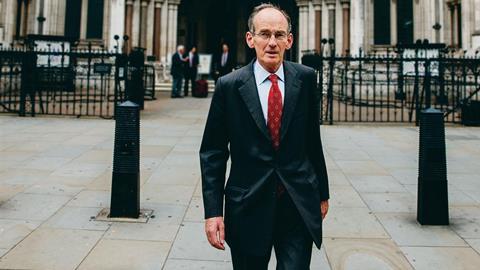Sir Andrew McFarlane is undertaking a review of transparency in the family courts, but it must provide the correct balance between protecting privacy and promoting openness
Secrecy shrouds the family courts, as hearings are generally held in private. But a recent High Court judgment condemning a leadership judge for employing ‘obsolescent concepts’ on sexual consent highlighted how worrying this lack of transparency can be.
HHJ Tolson QC’s judgment following a fact-finding trial in proceedings for child arrangement orders was ‘so flawed as to require a retrial’.
Had Tolson’s order not been appealed to the High Court – which delivered its anonymised judgment in open court and published it – we might have been none the wiser. Is it time for the doors to the family court to be pushed open a little wider? This is something Sir Andrew McFarlane, president of the Family Division, is pondering in his transparency review. He has issued a call for evidence.
McFarlane is particularly keen to receive submissions on whether the line is correctly drawn between the need for confidentiality for the parties and children in proceedings, and the need for the public to have confidence in the work these courts undertake on behalf of the state and society.
Labour MP Louise Haigh, who has called for an independent inquiry into the family courts, believes the presumption that no reporting is permitted should be reversed. She tells me: ‘You could [introduce] restrictions just as you have in the criminal system, where you protect the anonymity of rape victims and children.’
The Transparency Project, a charity working to make family law and courts more open, believes McFarlane’s review should focus on how privacy can be appropriately safeguarded while also achieving greater transparency. It says: ‘Transparency and due privacy can both be achieved, although it is not being consistently done on either front at the moment. We hope this review will think creatively about how those dual aims can both be honoured without falling into the trap of generating an adversarial trial of privacy versus transparency, and of setting itself up to have to rule in favour of one “winner” and against one “loser”.’
'Transparency and due privacy can both be achieved, although it is not being consistently done on either front'
Transparency Project
The family courts are not quite as secret as they used to be. Legal bloggers can now join journalists in court to hear cases. Guidance has also been published on reporting in the family court and anonymising judgments for publication.
However, former family chief Sir James Munby, who has long argued for the ‘glare of publicity’ to shine on the family courts, noted last week that very few first-instance judgments in private law cases are published on the BAILII website. Published judgments by district judges in such cases are ‘vanishingly few’.
Commenting on the Tolson case, he said: ‘No doubt some will say that this particular judgment is not typical, that it is an “outlier”. Others, no doubt, will say that it is no more than the very small tip of the proverbial iceberg. Without research we simply do not know, but I fear that the latter view is probably very much closer to the truth.’
Research is key to understanding what is happening in the family court – but it is lacking.
Munby calls for a detailed programme of rigorous, independent research by academics. This should begin with a comprehensive international literature review of all the existing non-legal research into the existence, causes and consequences, and means of identifying parental alienation and domestic abuse. There should be a comprehensive review, including all cases on BAILII as well as law reports, of all publicly available English case law, focusing particularly on first-instance decisions relating to parental alienation and domestic abuse.
In a six-month survey, judges would complete a form designed by practitioners and researchers. They would record at the end of every hearing in every case key information ‘to enable one to see what is going on at all levels of the family court’ in cases under part II of the Children Act 1989 and part IV of the Family Law Act 1996.
Munby says: ‘To minimise the burden on judges, and maximise the level of compliance, the pro-forma should consist mainly of purely factual questions to which the answer is Yes or No, or which can be answered with the minimum of text (eg a date, a case number, and so on). There should be a facility to enable judges to provide additional comments, but only if they wish. The data would be transferred to an electronic database to facilitate analysis and the framing of conclusions.’
McFarlane’s call for evidence closes on 2 March.



































1 Reader's comment